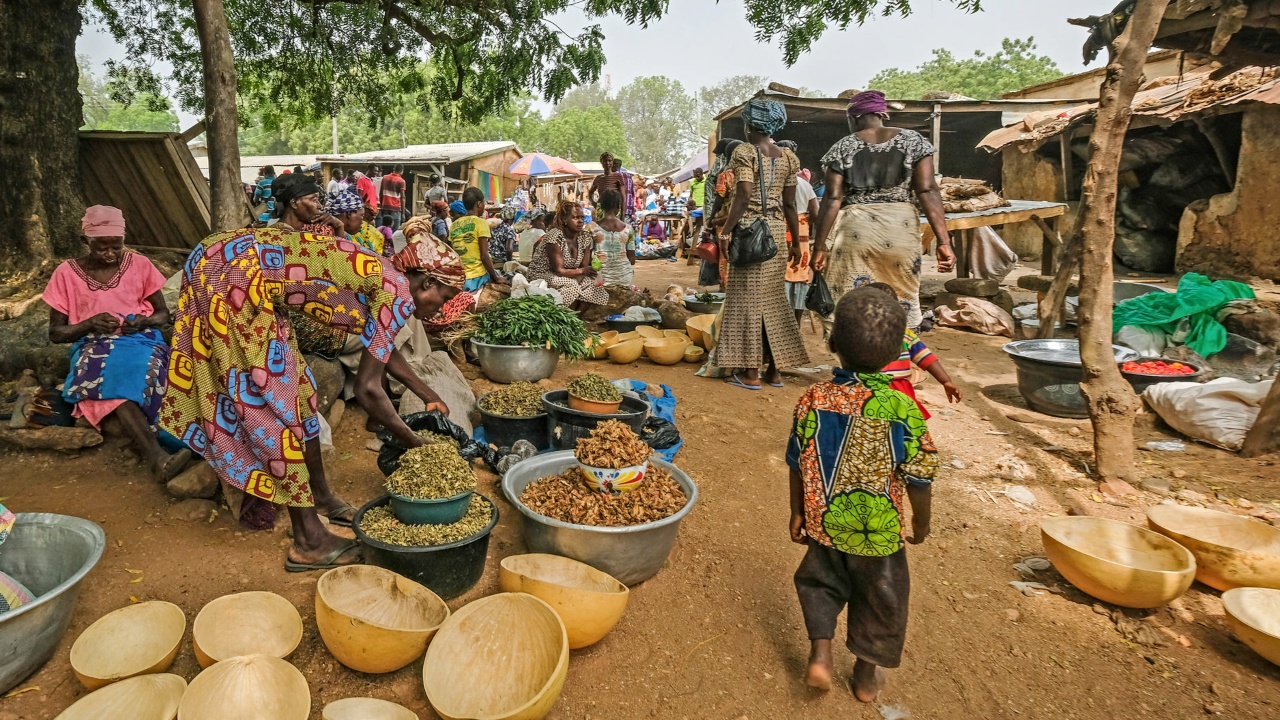Countries in the Horn of Africa are on the brink of an unimaginable famine – not least because of the war in Ukraine. Sub-Saharan Africa continues to bear the brunt of food security concerns worldwide. One of the most important responses to the current challenges hails from the continent itself. Michael Bruentrüp calls for the integration of the Comprehensive Africa Agriculture Development Programme.
The outlook is dramatic: we are sliding towards a food crisis which looks set to make the famines of 2007-2008 and 2011-2013 pale in comparison. The COVID-19 pandemic increased the number of those starving by about 150 million. 2022 is marked by export bottlenecks from Ukraine, which will increase this number by another 7 to 19 million – without including looming fertiliser and energy shortages. In any case, the global famine statistics were already bleak: between 2010 and 2019, no fewer than 570 million people – primarily smallholder farmers, but increasingly also urban households – faced food shortages.
In addition to immediate measures against the looming hunger crisis, reforms are needed to improve food security in the long term. How this is to be done has been a core question of development debates in and about Africa for decades. The most important answer to this question may come from the African Union (AU).
The political transformation of the food system
The Comprehensive Africa Agriculture Development Program (CAADP) was first adopted by the African Union in 2003 and has since been modified and reaffirmed several times. The CAADP aims to transform Africa’s agricultural and food systems. Agriculture remains the key sector in relation to poverty reduction, food security and economic growth. The goals of the CAADP include ending hunger and halving poverty, massively increasing intra-African trade, including in agricultural goods, as well as improving the resilience of livelihoods and production systems to climate change and other risks.
To this end, principles and a whole system of rules, organisations, processes and platforms have been created to anchor the CAADP at all levels from local to continental. Particularly noteworthy are a total of 46 indicators designed to measure progress. The two most important and best-known CAADP indicators state that 10 percent of state budgets should be invested in the agri-food sector and that at least 6 percent growth in agricultural production should be achieved.
20 years of the CAADP – what has happened so far?
The last CAADP interim report dates from November 2021 – before the Ukraine war – and it only partially reflects the impact of the COVID-19. It showed that of the 51 countries that have reported on the CAADP, only one nation is on track to meet most of the CAADP targets by 2025: Rwanda. The country was the first to fully integrate the CAADP process into national planning and made great strides in, for example, evidence-based policy planning, land titling, women’s empowerment, productivity progress and climate resilience. On the commitment to fight hunger, only one country was also “on track”: Kenya, which made progress on productivity, post-harvest losses and social protection. But even trailblazer Rwanda did not achieve all the intermediate targets though, the 10 percent investment target. Four other countries – Egypt, Eswatini, Seychelles and Zambia – have met this.
Africa-wide, a steady decline in the share of public expenditure on agriculture has been seen over the last 15 years. 19 countries have made some progress, and 24 countries have improved compared to previous years. Overall, the report gives the impression that African countries continue to neglect agriculture and food security and fall short of the goals they themselves have set – a finding that other studies confirm. Disappointment with the shortcomings in the CAADP’s implementation should not lead to writing off the initiative, but should underscore commitment to it.
Despite deficits, the CAADP remains the right guiding principle
There are at least three arguments in favour of a common agricultural strategy such as the CAADP – especially in the light of the looming food crisis. First, a unified voice will yield effective results internationally. While the discussion around agriculture and food in many parts of the world is dominated by the ecological consequences of intensive farming, debates about factory farming and how to deal with food over-supply, the situation on the continent is different. Interim goals such as the abolition of the hand hoe by 2025, which was included in the AU’s strategic concept for the socio-economic transformation of the continent. On international podiums, such as at the World Trade Organisation or the environmental conventions in which global framework conditions for agriculture are negotiated, the CAADP can facilitate a common platform, as it did at the 2021 Food Systems Summit.
Second, a common framework promotes qualitative justification of policy decisions. The CAADP ensures a continuous showcase of achievements organised according to jointly defined criteria, which, in turn, are peer-reviewed by participating African nations. This reduces the perception of Western donor countries patronising from the outside.
Thirdly, a continent-wide food security programme can enhance agricultural aid within national and international funding logics. Rural areas and their priorities are often neglected in plans; their needs are long-term, and therefore politically less attractive. Supporting the urban population, on the other hand, is seen as more feasible. However, even with optimistic assumptions about structural change in sub-Saharan Africa, a large share of future employment and income will have to come from the agricultural and food sector. Targeting support to this sector is paramount.
The CAADP would also need amending: more weight should be given to the diversity in countries; the indicators used so far are not yet target-oriented enough in their generalised nature. The integration of the CAADP into national policies should be boosted, beyond the realm of agricultural policies. This would mean that the CAADP initiatives would have to be approved by national parliaments. Meanwhile, donors would have to be more committed to funding budget support instead of assisting isolated projects.
If these adjustments are made, the African agricultural and food sector can build on an existing response from the continent itself to sustainably, and in a manner that reduces poverty, transform in the long-term.
Translated from the German by Jess Smee.
Photo: A Sudan farmer is harvesting sorghum plants. Credit: Africa Renewal, Flickr. Licensed under CC BY-NC-SA 2.0.
This piece was published jointly with the the Bertelsmann Stiftung blog.






insightful